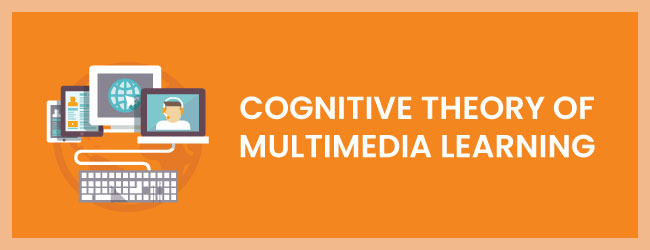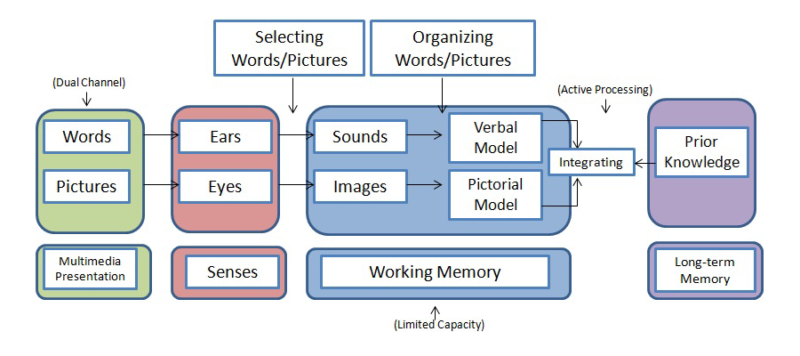
Richard Mayer’s Cognitive Theory of Multimedia Learning is provides evidence-based principles for designing multimedia learning. But how can you apply these principles. This article presents the principles and how to apply them when designing multimedia learning.
Underlying Learning Theories
According to Dr. Mayer, the Cognitive Theory of Multimedia Learning (CTML) is based on three assumptions:
- Dual Coding Theory. The first assumption is the unproven but somewhat accepted theory that we process visual and verbal information differently and in two separate channels. Known as Paivio’s Dual Coding Theory, it states that we process and internally represent visual information in a different way than verbal information.
- Limited Capacity. The second assumption is that due to the capacity of working memory, we can only process a limited amount of information in each channel at one time.
- Active Processing. The final assumption is that in order to make something meaningful, people actively process information by paying attention and organizing and integrating the information.
The Cognitive Theory of Multimedia Learning
Now that you have the background, the actual theory states that a person must engage in five cognitive processes in order to learn in a multimedia environment. The learner coordinates and monitors these five processes in working memory:
1) Selects relevant words from a multimedia message
2) Selects relevant visuals from a multimedia message
3) Builds connections among certain words to create a coherent verbal model
4) Builds connections among certain images to create a coherent pictorial model
5) Integrates the verbal and pictorial models with each other and with prior knowledge.

Image source: Wikiversity shorturl.at/gqrQ
Although this is a complex process, the brain can manage it when multimedia messages are designed for the human mind. See how to apply this to multimedia design next.
Practical Implications
Every good learning theory needs practical application. So, what are the implications of this theory and how does CTML help us design better eLearning courses? In many ways, it brings us back to the basics of good design.
- Be sure to have the learner’s attention when they are processing a multimedia message. Due to the limited capacity of working memory, it’s important to fully engage the learner.
- Due to the limited capacity of working memory, be sure to emphasize and concentrate on what is most important.
- Present the multimedia message in a transferable structure to make it easier for learner’s to organize and structure the knowledge. This facilitates building a coherent mental model. For example, comparing the characteristics of two concepts is a comparison structure that can help build accurate mental models.
- Ensure the multimedia elements are well-synchronized to promote integration because the learner must integrate a verbal model and a pictorial model.
Also, see Principles of Multimedia Learning for more on this topic.

Leave a Reply